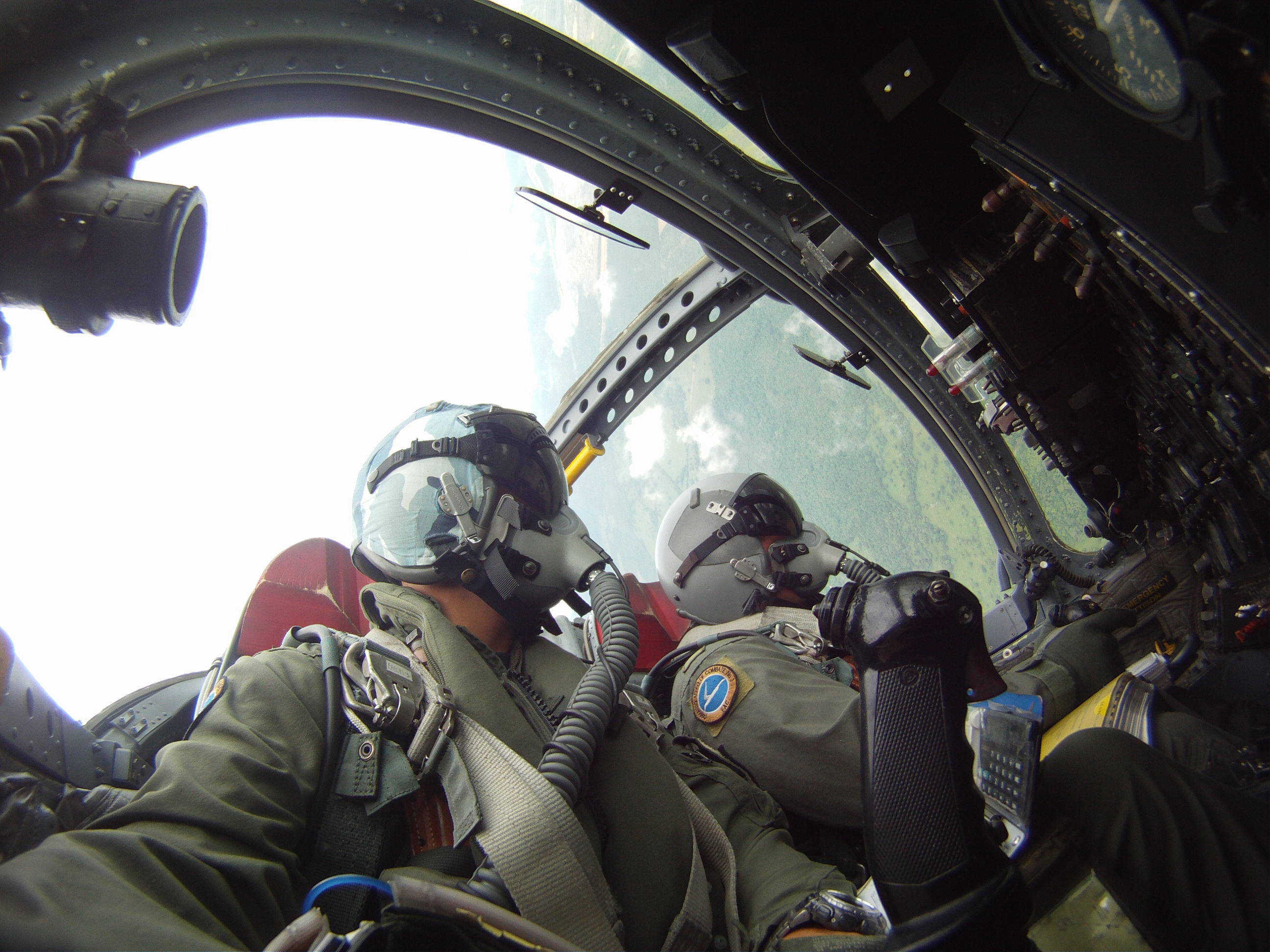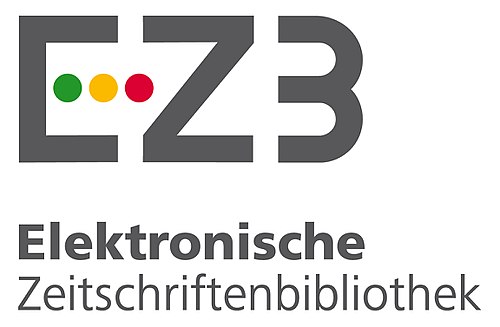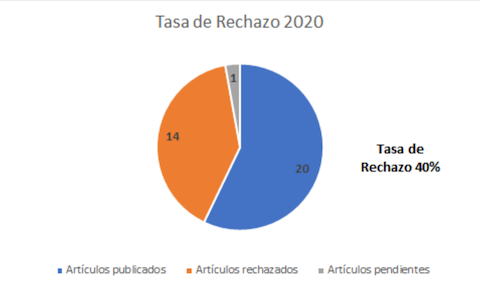Bruxism a disease of height
DOI:
https://doi.org/10.18667/cienciaypoderaereo.599Keywords:
bruxism, Colombian Air Force,, pilotsAbstract
Bruxism is an oral parafunction characterized by clenching and / or grinding of teeth during sleep or wakefulness. It is considered an etiological factor of the functional and painful alterations of the cranio-cervico-mandibular unit, as well as of the progressive destruction of the dental and periodontal structure.
Dental tightening or bruxomania is one of the most prevalent, complex and destructive orofacial disorders, since only a low percentage of patients are aware that they are clenching their teeth, generally what draws attention are its destructive and irreversible e ects that are subsequently complex and expensive to rehabilitate. Work-related stress is often associated as a contributing factor to bruxism, and the profession of military pilot involves highly complex stress management; therefore, the objective of this study was to determine the prevalence of bruxism in Colombian Air Force pilots.
A descriptive study was conducted at the Aerospace Medicine Center of the Colombian Air Force, in which the incidence of bruxism was calculated in 284 military pilots who attended their annual medical examinations of psychophysical fitness between October 1, 2012 and June 30, 2013. Owed to the fact that there is no statistical data in Colombia about the percentage of pilots who have this pathology.
As a result, the prevalence of bruxism in pilots was 41.24%. 42.47% reported high levels of stress in their profession as a military pilot, and 50.44% reported medium levels of stress. 61.76% of Lieutenant Colonel grade pilots tested positive for bruxism. No significant difference was found according to the type of aircraft they fly, either rotary wing or fixed wing helicopter or airplane. The 20.35% of pilots have some painful symptoms related to bruxism and 38.05% reported being aware that they clench their teeth during sleep, 13.27% reported that during their flight routine they clench their teeth. 27.43% are receiving some treatment for bruxism.
In conclusion, the results showed a prevalence of bruxism in the personnel of pilots of the Colombian Air Force of 41.24%, only 27.43% of pilots who were diagnosed as bruxomanos receive any treatment for this pathology, and 38.05% of pilots are aware that they are clenching their teeth, which requires the implementation of promotion programs, prevention and establishment of care protocols for the management of this pathology.
Downloads
References
Academia Americana del Dolor Orofacial (AAOP). (2008). Orafacial Pain. Guidelines for assessment, diagnosis and Management. 4ª ed. In T. A. Pain (Ed.). Hanover Park, Illinois, EE.UU.
Alcolea, J. R., Herrero, P., Ramón, M., Trinidad, E., Pérez, M. y Garcés, D. (2014). Asociación del bruxismo con factores biosociales. CCM, 18(2), 190-202. Recuperado de http://scielo.sld.cu/pdf/ccm/v18n2/ccm03214.pdf
Aroucha, S. A., Almeida de Carvalho, A. L., Carneiro de Lucena, S., De Siqueira Coelho, J. P. & Brandão de Araújo, T. P. (2008). Associação entre bruxismo e estresse em policiais militares.125-129. Rev. odonto ciênc. 23(2), 125-129. Recuperado de http://revistaseletronicas.pucrs.br/ojs/index.php/fo/article/viewFile/2436/3025
Asociación Americana de Desordenes del Sueño (ASDA). (1990). Diagnosis classification steering committee. Classification of sleep disorders: diagnostic and coding Manual. In A. S. Associa- tion, & A. Press (Edits.). New York, Rochester, EE. UU.
Bader, G. (2000). Sleep bruxism; an overview of an oromandibu- lar sleep movement disorder. Review article, 4(1), 27-43. doi:10.1053/smrv.1999.0070.
https://doi.org/10.1053/smrv.1999.0070
Benavides Garay, A. R. (2009). Relación de la frecuencia de bruxismo con el tipo de perfil de afrontamiento del estrés en estudiantes del 1er y 2do ciclo comparado con los estudiantes del 9no y 10mo ciclo de la Facultad de Estomatología de la Universidad Inca Garcilaso de la Vega en el semestre 2009- II (Tesis). Univer- sidad Inca Garcilaso de la Vega. Recuperado de http://www.cop.org.pe/bib/tesis/ANAROSABENAVIDESGARAY.pdf
Barbosa Hernández, J. Z. (2012). Prevalencia de bruxismo en alumnos del décimo semestre de la Facultad de Medicina Campus Posa Rica - Tuxpan. (Tesis). Universidad Veracruza- na. Recuperado de https://www.yumpu.com/es/document/view/16282032/prevalencia-de-bruxismo-en-alumnos-del-decimo-semestre-de-la-
Bermejo, A. (1998). Medicina Bucal, 1(2). España: Síntesis.
Christensen, G. (2000). Treating bruxism and clenching. MEDLINE Medline. Recuperado de https://www.ncbi.nlm.nih.gov/pubmed/10680392
https://doi.org/10.14219/jada.archive.2000.0152
Chrousos, G. G. (1992). The concepts of stress and stress system disor- ders. Overview of physical and behavioral homeostasis. Recuperado de https://www.ncbi.nlm.nih.gov/pubmed/1538563
https://doi.org/10.1001/jama.1992.03480090092034
Díaz, S. (2017). Algoritmo de trabajo para el paciente con bruxis- mo. Arch Med Camagüey, 21(4), 487-497. Recuperado de http://scielo.sld.cu/pdf/amc/v21n4/amc070417.pdf
Gunepin, M. (2011). Techniques for potential improvement inter- vention for the prevention of bruxism among french military aircrews. ResearchGate, 157(2), 196-197. doi: http://dx.doi.org/10.1136/jramc-157-02-18
https://doi.org/10.1136/jramc-157-02-18
Hernández, B. D., Díaz Gómez, S. M., Hidalgo Hidalgo, S., Lazo, R. (2017a). Bruxismo: panorámica actual. Arch Med Camagüey, 21(1), 913-930. Recuperado de http://scielo.sld.cu/pdf/amc/v21n1/amc150117.pdf
Hernández, B. D., Díaz Gómez, S. M., Hidalgo Hidalgo, S., López, S., García, L. & Noy, J. E. (2017b). Factores de riesgo de bruxis- mo en pacientes adultos. Arch Med Camagüey, 21(3), 311-320. Recuperado de http://scielo.sld.cu/pdf/amc/v21n3/amc020317.pdf
Lavigne, G. J., Goulet, J. P., Zuconni, M., Morisson, F & Lobbezoo, F. (1999). Sleep disorders and the dental patient. Oral Surg O,88(3), 257-272. doi: 10.1016/s1079-2104(99)70025-9.
https://doi.org/10.1016/S1079-2104(99)70025-9
López, M. F. (2006). El registro polisomnografico. En F. Alcala (Ed.).Alcala la Real.
Magnusson, T. E. (2005). A prospective investigation over two decades on signs and symptoms of temporomandibular disorders and associated variables. A final summary. Acta Odontologica Scandinavica, 63, 99-109. Recuperado de https://sci-hub.tw/10.1080/00016350510019739
https://doi.org/10.1080/00016350510019739
Marin, M. (2018). Nivel de estrés laboral asociado a bruxismo en la tripulación aérea de la Fuerza Aérea del Perú durante el año 2017. (Tesis de grado). Lima, Perú. Recuperado de http://repositorio.upsjb.edu.pe/bitstream/handle/upsjb/1687/T-TPCD-Mayra%20Carolei%20Marin%20Chavez. pdf?sequence=1&isAllowed=y
Nápoles, D. G., García Cabrera, L., Rodríguez Reyes, O. y Nápoles Méndez C. D. (2014). Tendencias contemporáneas de las bases fisiopatológicas del bruxismo. Medisan, 18(8), 1-9. Recuperado de http://scielo.sld.cu/pdf/san/v18n8/san17188.pdf
Okeson, J. (2008). Oclusión y afecciones temporomandibulares (5.a ed.). Madrid, España: Mosby.
Pavone, B. W. (1985). Bruxism and its effect on the natural teeth. J Prosthet Dent, 53(5), 692-696.
https://doi.org/10.1016/0022-3913(85)90026-5
Perel, M. (1994). Parafuncional habits, nigthguards, and Root Form Implants, pp. 261-263. doi: 10.1097/00008505-199412000-00011.
https://doi.org/10.1097/00008505-199412000-00011
Santos, C. F., Fioranelli, G., Osses, E. F., Costa, J. R., Puliti, E. & Pascual A. P. (2016). Los síntomas de diferentes niveles de gravedad del bruxismo: estudio transversal. Fisioterapia e Pesquisa, 23(4), 423-430. doi: 10.1590/1809-2950/15988723042016. Recuperado de http://www.scielo.br/pdf/fp/v23n4/2316-9117-fp-23-04-00423.pdf
Ramfjord, S. P. (1961). Bruxism: A clinical and electromyographic study. Jamer Dent Assoc, 62, 21-44.
https://doi.org/10.14219/jada.archive.1961.0002
Seraidarian, P. V. (2001). Bruxismo: uma atualização dos conceitos, wtiologia, prevalência e gerenciamento. JBA, Curitiba, 1(4), 290-295. Recuperado de https://www.dtscience.com/wp-content/uploads/2015/10/Bruxismo-Uma-Atualiza%C3%A7%C3%A3o-dos-Conceitos-Etiologia-Preval%C3%AAncia-e-Gerenciamento.pdf

Downloads
Published
Issue
Section
License
Assignment of Copyrights
Authors assign Ciencia y Poder Aéreo journal the exclusive rights (reproduction, distribution, public communication, and transformation) to exploit and commercialize their work, in whole or in part, in all the formats and modalities of present or future exploitation, in all languages, throughout the life of the work and throughout the world.
All contents published in Ciencia y Poder Aéreo journal are licensed under a Creative Commons Attribution 4.0 International License, whose complete information is available at http://creativecommons.org/licenses/by/4.0/
Under the terms of this license, users are free to download, print, extract, archive, distribute and publicly communicate the content of articles, provided that proper credit is granted to authors and Ciencia y Poder Aéreo, scientific journal of the Graduate School of the Colombian Air Force. Except when otherwise indicated, this site and its contents are licensed under a Creative Commons Attribution 4.0 International License.
For other uses not considered under this license it is required to contact the Director or the Editor of the journal at the e-mail address cienciaypoderaereo1@gmail.com.
The Graduate School of the Colombian Air Force and this publication are not responsible for the concepts expressed in the articles, including the metadata or the affiliation stated by authors. This is the full responsibility of the authors.





















